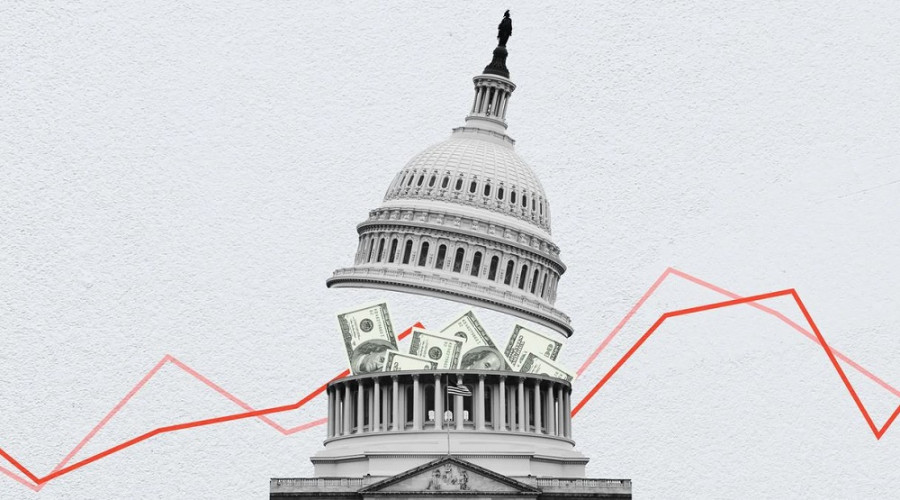The "hottest" week of November for the EUR/USD pair just ahead. According to its results, the dollar will either strengthen or weaken significantly – in the current conditions, the third (neutral) option is unlikely. Federal Reserve officials heated up the public with their hawkish comments last week, so key economic reports for the upcoming week will likely provoke price turbulence among dollar pairs. We are talking about inflation data, which can either "sink" the greenback or provide an upward momentum.
Briefly, I will remind you that last week some representatives of the U.S. central bank (including Fed Chair Jerome Powell) hinted that they are ready to support further interest rate hikes if the current level does not "work" against inflation. In particular, Powell expressed uncertainty that the measures taken would be sufficient to return inflation to the target 2% level. Some of his colleagues (such as Bauman and Logan) also allowed for another rate hike – "if the need arises."
The inflation reports to be published next week will partly answer the question of the need for further rate hikes by the Fed. Therefore, the market is eagerly awaiting these reports as they will determine the dollar's direction.

On Tuesday, November 14, we will find out the dynamics of the Consumer Price Index (CPI) in October. According to preliminary forecasts, the overall CPI will decrease to 0.1% on a monthly basis (the lowest value since May of this year) and to 3.3% on an annual basis. The core CPI, excluding food and energy prices, is expected to decrease to 0.2% on a monthly basis and to 4.0% on an annual basis (the lowest value since September 2021).
The next day, on November 15, the U.S. will publish the October Producer Price Index (PPI). This report could favor the U.S. currency. According to the forecasts of most experts, the overall index is expected to demonstrate an upward trend again, rising to 2.3% year-on-year (this will be the fourth consecutive increase in the index). The core Producer Price Index in October is expected to remain at the September level, that is, at 2.7%.
If reports on CPI and PPI turn out to be in the green zone, the above-mentioned comments from the Fed will "take on new colors" – the probability of a Fed interest rate hike will increase, and this fact will provide significant support to the dollar. In such a case, the EUR/USD pair will certainly surpass the support level of 1.0650 (the lower line of the Bollinger Bands indicator on the 4-hour chart) and will likely return to the area below 1.05.
However, if the reports come out at least at the forecasted level (not to mention the "red zone"), demand for the dollar may weaken, as there will be a question about the feasibility of additional tightening of monetary policy. In other words, inflation will either "justify" the hawkish intentions of some Fed representatives or neutralize their position.
All other economic reports will play a secondary role for EUR/USD (for example, ZEW indices, the number of issued building permits in the U.S., retail trade volume). The market will focus on inflation and comments from Fed representatives (speeches are expected from John Williams, Lisa Cook, Philip Jefferson, Michael Barr, Loretta Mester, Ostan Gulsby, Christopher Waller, Mary Daly).
The "looming shutdown" will also have a certain impact on the greenback. The United States will be on the brink of a shutdown for the second time in two months. If by November 17 the U.S. Congress does not pass a full-fledged or another temporary budget, the work of government agencies will be suspended. The Speaker of the U.S. House of Representatives, Mike Johnson, introduced a two-stage bill to prevent a shutdown. It provides that funding for some government programs will continue until January 19, and for others until February 2. The White House and Democratic representatives in the Senate have already opposed this proposal. Therefore, there is a high probability of political battles over a temporary/permanent budget, increasing the risk of a shutdown. One of the beneficiaries of the current situation will be the safe-haven dollar, which will be in higher demand as risk aversion intensifies.
At the start of the trading week, the U.S. currency may also react to other resonant news. On Friday evening, Moody's agency lowered its forecast for the U.S. credit rating from "stable" to "negative." Among the reasons for this decision are the sharp increase in debt servicing costs and "entrenched political polarization." According to Moody's experts, these factors increase the risks of reducing the financial stability of the United States. The White House disagreed with this assessment, with representatives of the Treasury Department stating that the U.S. economy "remains strong, and Treasury securities are the most outstanding safe and liquid asset in the world." It is worth noting that the market reacted sharply to the decision of the Fitch agency, which in August downgraded the U.S. credit rating from triple "A" to double "A+." Therefore, Moody's decision could also trigger increased volatility among dollar pairs, including the EUR/USD pair.
In summary, it can be concluded that the upcoming week promises to be eventful. It is advisable to make trading decisions on the EUR/USD pair only after the release of the Consumer Price Index data. This is the main report of the week, the significance of which is difficult to overestimate. Inflation will either open the doors for EUR/USD to reach the area below 1.05 or pave the way to the 1.08 price level.
The material has been provided by InstaForex Company - www.instaforex.comfrom Forex analysis review https://ift.tt/MjIztbB
via IFTTT
